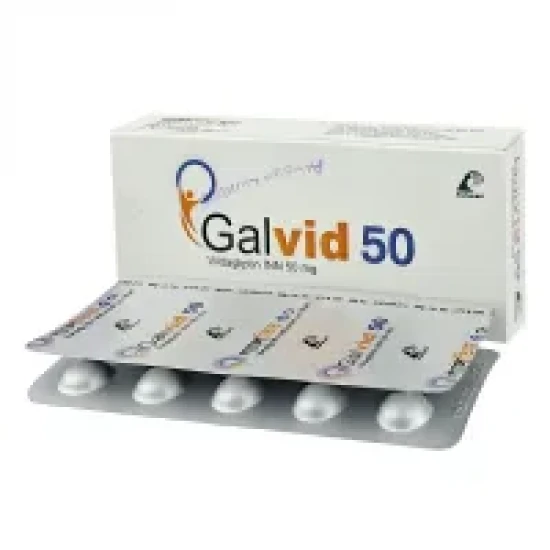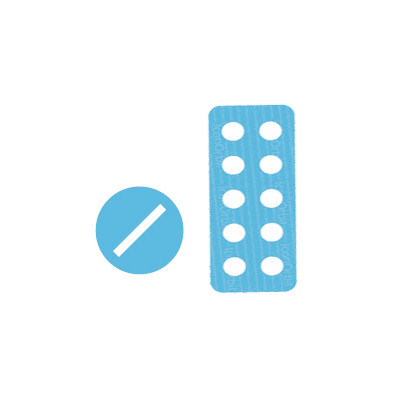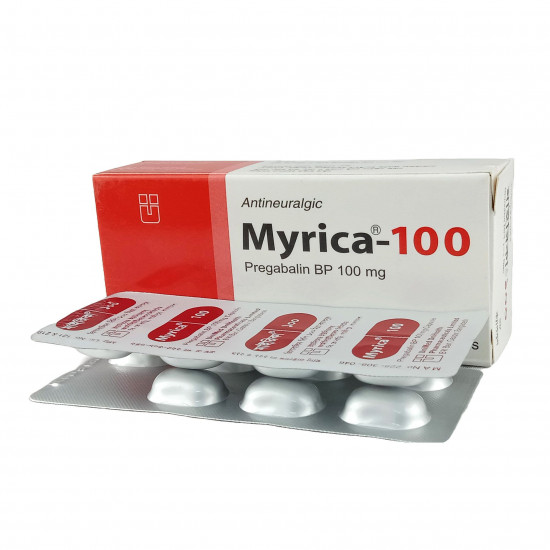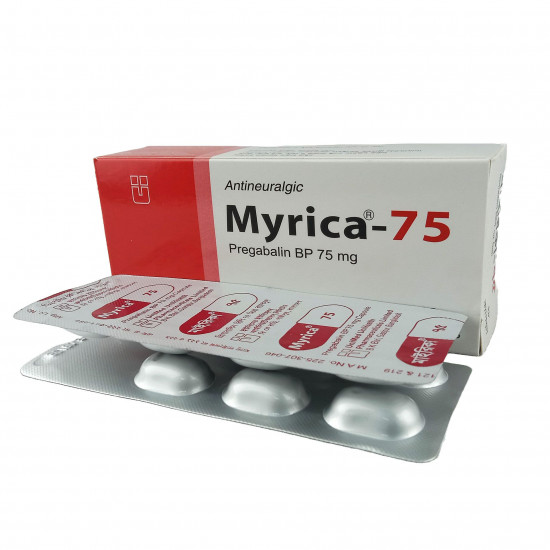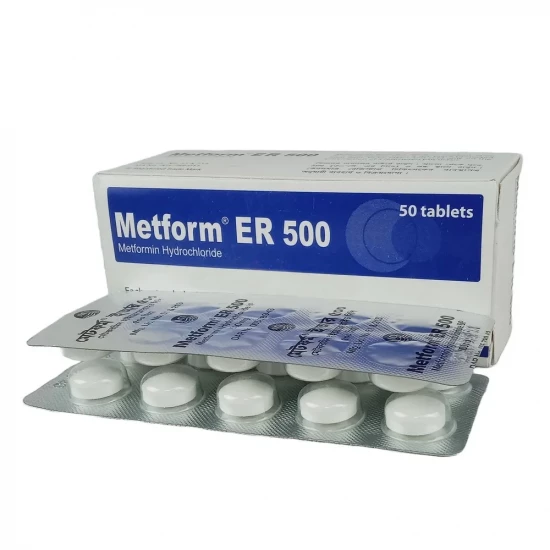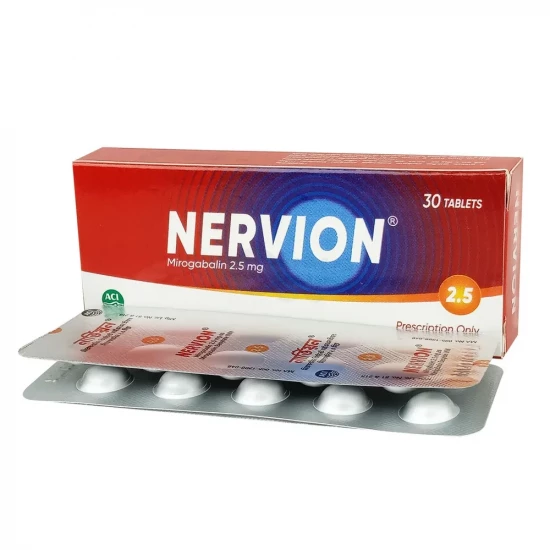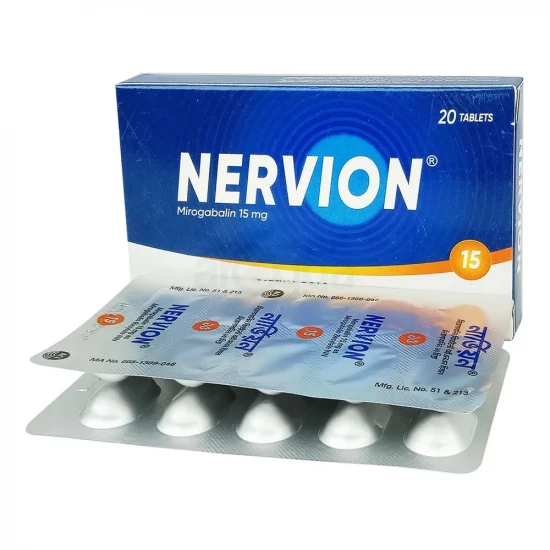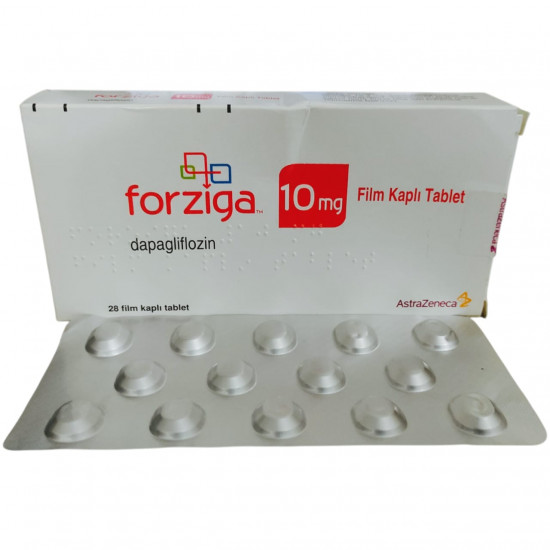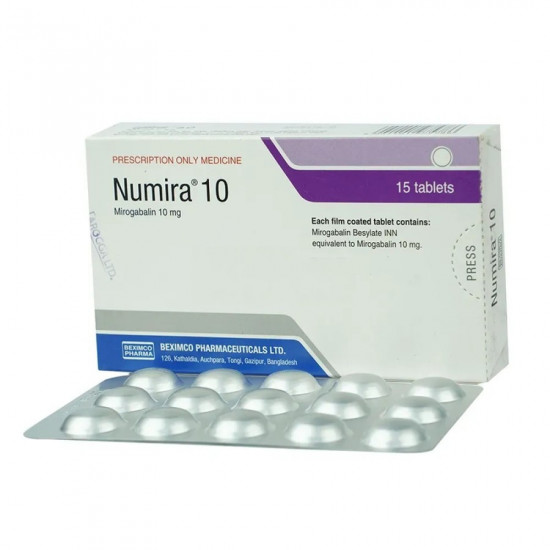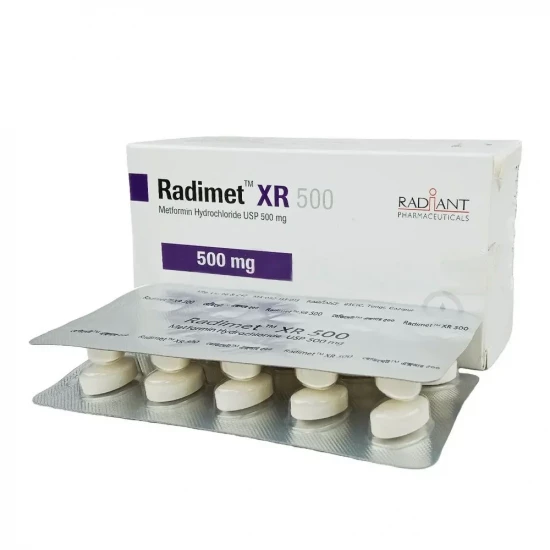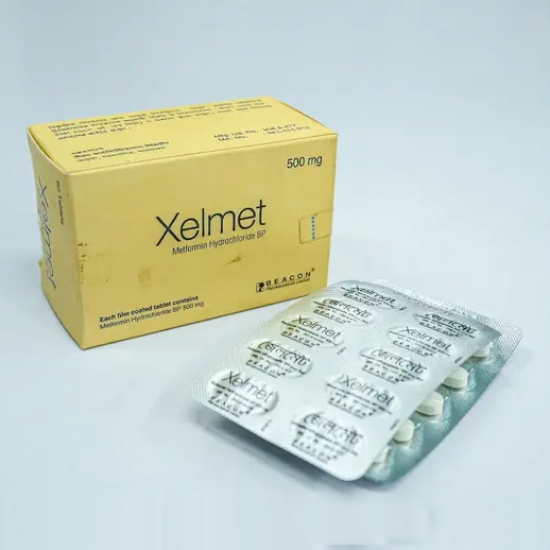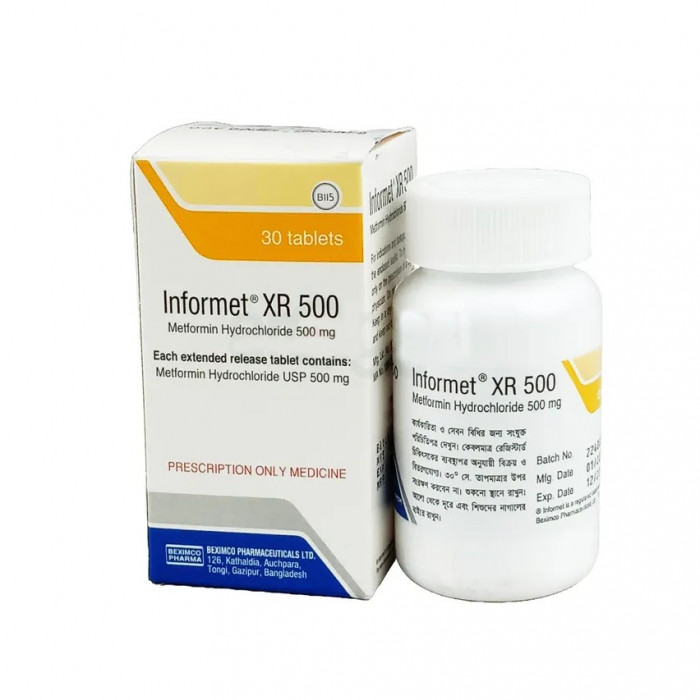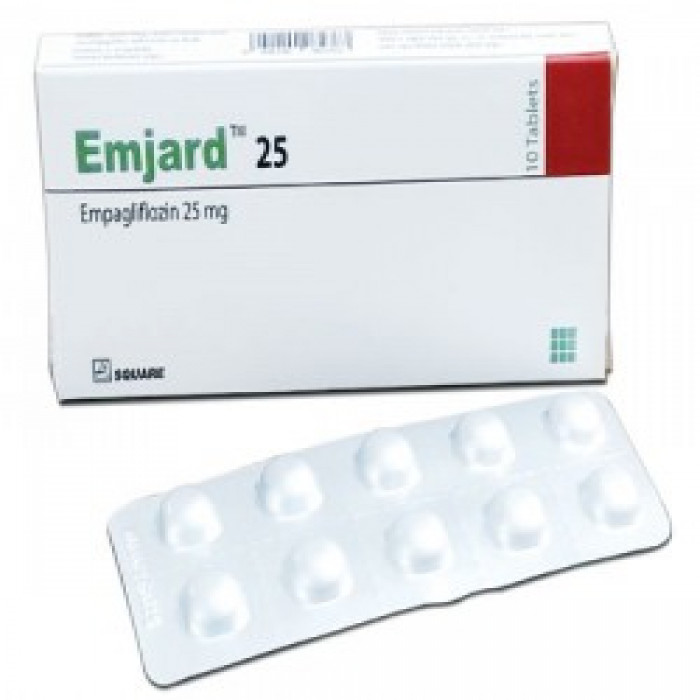
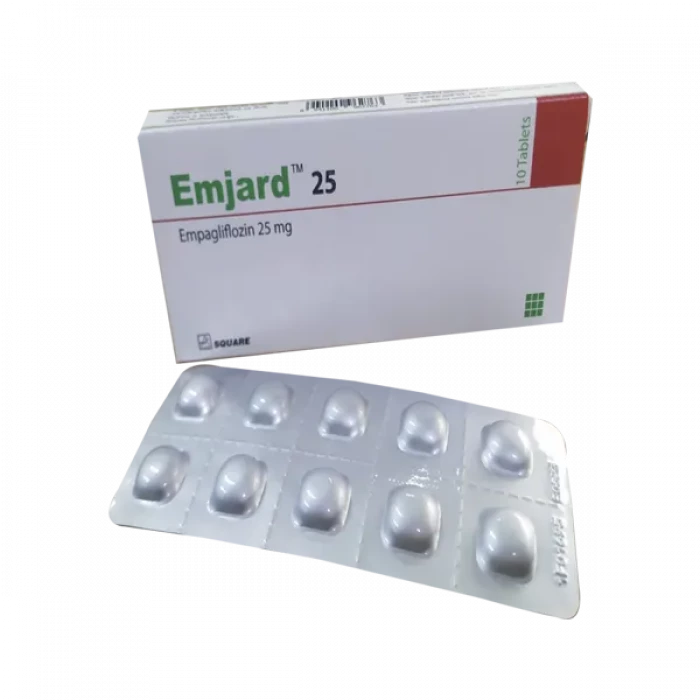
✔ 100% Authentic Product
👁️ Currently Viewing 1072
Generic Name: Empagliflozin 25mg
Square Pharmaceuticals Limited
Discount
Price: ৳ 376
MRP:
৳
400
6%
Off

100% Genuine Products, Guaranteed

Safe & Secure Payments, Always

Fast, Secure & Efficient Delivery

Proper Packaging
 Cash on Delivery - All over Bangladesh
Cash on Delivery - All over Bangladesh Regular Delivery - 12-24 Hours, Dhaka City* Charge Tk.39-59
Regular Delivery - 12-24 Hours, Dhaka City* Charge Tk.39-59 Regular Delivery - 24-48 Hours, Other Cities* Charge Tk.99-110
Regular Delivery - 24-48 Hours, Other Cities* Charge Tk.99-110
 ফ্রি ডেলিভারিঃ - ৯৯৯ টাকা+ অর্ডারে, ঢাকা
শহরে
ফ্রি ডেলিভারিঃ - ৯৯৯ টাকা+ অর্ডারে, ঢাকা
শহরে ফ্রি ডেলিভারিঃ - ২৯৯৯ টাকা+ অর্ডারে, ঢাকার
বাহিরে
ফ্রি ডেলিভারিঃ - ২৯৯৯ টাকা+ অর্ডারে, ঢাকার
বাহিরে
100% Genuine Products, Guaranteed
Safe & Secure Payments, Always
Fast, Secure & Efficient Delivery
Proper Packaging
 Cash on Delivery - All over Bangladesh
Cash on Delivery - All over Bangladesh Regular Delivery - 12-24 Hours, Dhaka City* Charge Tk.39-59
Regular Delivery - 12-24 Hours, Dhaka City* Charge Tk.39-59 Regular Delivery - 24-48 Hours, Other Cities* Charge Tk.99-110
Regular Delivery - 24-48 Hours, Other Cities* Charge Tk.99-110 ফ্রি ডেলিভারিঃ - ৯৯৯ টাকা+ অর্ডারে, ঢাকা
শহরে
ফ্রি ডেলিভারিঃ - ৯৯৯ টাকা+ অর্ডারে, ঢাকা
শহরে ফ্রি ডেলিভারিঃ - ২৯৯৯ টাকা+ অর্ডারে, ঢাকার
বাহিরে
ফ্রি ডেলিভারিঃ - ২৯৯৯ টাকা+ অর্ডারে, ঢাকার
বাহিরে
✅ Description:
Indications of Emjard 25 Tablet
Empagliflozin is used to improve glycemic control in adults with type 2 diabetes mellitus as a supplement to diet and exercise.
In adult patients with type 2 diabetes mellitus and established cardiovascular disease, the goal is to lower the risk of cardiovascular death.
Pharmacology of Emjard 25 Tablet
Empagliflozin could be a sodium glucose co-transporter-2 (SGLT-2) inhibitor. SGLT2 co-transporters are capable for reabsorption of glucose from the glomerular filtrate within the kidney. The glucuretic impact coming about from SGLT2 hindrance diminishes renal assimilation and brings down the renal edge for glucose, coming about in expanded glucose excretion. Also, it contributes to diminished hyperglycaemia, helps weight misfortune, and diminishes blood weight.
Administration & Dosage of Emjard 25 Tablet
Empagliflozin is prescribed at a dose of 10 mg once daily, with or without food, in the morning. The dose of Empagliflozin can be increased to 25 mg once daily in patients who tolerate it well. It is recommended that patients with volume depletion have this condition corrected before starting Empagliflozin.
Interaction of Emjard 25 Tablet
Diuretics: Co-administration of Empagliflozin with diuretics brought about in expanded pee volume. Insulin or Affront Secretagogues: Co-administration of Empagliflozin with affront or affront secretagogues increments the hazard for hypoglycemia. Positive Pee Glucose Test: Checking glycemic control with pee glucose tests isn't suggested in patients taking SGLT2 inhibitors as SGLT2 inhibitors increment urinary glucose excretion and will lead to positive pee glucose tests. Utilize elective strategies to screen glycemic control. Interference with 1,5-anhydroglucitol (1,5-AG) Measure: Checking glycemic control with 1,5-AG test isn't prescribed as estimations of 1,5-AG are untrustworthy in surveying glycemic control in patients taking SGLT2 inhibitors. Utilize elective strategies to screen glycemic control.
Contraindications
Patients with a history of serious hypersensitivity reactions to Empagliflozin or any of its ingredients, severe renal impairment, end-stage renal disease, or dialysis should not take Empagliflozin.
Side Effects of Emjard 25 Tablet
Urinary tract infections and female genital mycotic infections are the most common side effects associated with Empagliflozin. Dehydration, hypotension, weakness, dizziness, and increased thirst are all common side effects.
Pregnancy & Lactation
Empagliflozin has not been studied in pregnant women in a sufficient and well-controlled manner. Only if the potential benefit outweighs the risk to the fetus should empagliflozin be used during pregnancy. Empagliflozin is not known to be excreted in human milk. It's not a good idea to do it if you're breastfeeding.
Precautions & Warnings
Renal function should be checked before starting Empagliflozin and then every few months after that. Patients with an eGFR of less than 45 ml/min/1.73 m2 should not start empagliflozin. Patients with an eGFR greater than or equal to 45 ml/min/1.73 m2 do not require dose adjustments.
Storage Conditions
Protect from light and moisture by storing below 30°C. Keep the medicine out of children's reach.
⚠️Disclaimer:
At ePharma, we’re committed to providing accurate and accessible health information. However, all content is intended for informational purposes only and should not replace medical advice from a qualified physician. Please consult your healthcare provider for personalized guidance. We aim to support, not substitute, the doctor-patient relationship.




